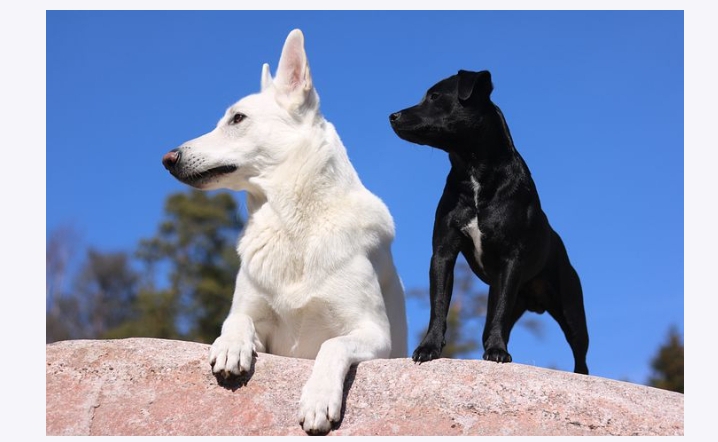Pet Insurance: Best Insurance Coverage For Your Pets


Definition of Pet Insurance
A sort of insurance policy known as pet insurance offers financial assistance for veterinary costs incurred as a result of accidental harm, disease, or other conditions affecting your pet. The expense of treatments like surgery, drugs, lab tests, and hospitalization are often covered. Additionally, some policies might pay for regular checkups and preventive care.
Policies for pet insurance differ in terms of the scope of coverage, the exclusions, and the cost of the premium. It’s crucial to take your pet’s unique needs into account when picking a pet insurance policy, as well as your budget and the kind of coverage you want. You can only claim a certain amount of money each year under some policies, but not under others. have higher premiums but no upper limit. Additionally, some insurance providers provide personalized plans that let you select the precise coverage options your pet needs.
It’s crucial to remember that pre-existing conditions are not covered by pet insurance, so it’s better to enroll your pet as soon as possible to get the most coverage. It’s crucial to examine various insurance plans and companies to pick the one that best suits your needs.
How can I submit a claim for my pet insurance?
The steps below are normally necessary to submit a claim under your pet insurance policy:
- Speak with your insurance company: As soon as your pet is hurt or becomes ill, you should notify your insurance company. They’ll give it to you providing the relevant details on how to handle the claim.
- Offer documentation of your pet’s care: In order to support your claim, you must provide proof of your pet’s treatment, such as vet bills and records.
- Submit the claim form: Your insurance company will normally give you a claim form, which you must fill out and submit with the documentation of your medical care.
- Wait for the claim to be processed: The insurance company will process the claim and decide the amount of compensation you are eligible for after you have submitted the claim form and any supporting paperwork. Depending on the insurance provider, this process could take a few days or many weeks.
- Obtain the reimbursement: Following the approval of your claim, you will reimbursement will come either directly from the insurance provider or via the veterinarian.
- Keep a copy of your insurance policy and all documentation related to your pet’s care and medical bills in case you ever need to file a claim. To be ready to submit a claim, make sure to educate yourself with the terms and conditions of your policy, including what is and is not covered.
Insurance for Pets
There are numerous pet insurance providers that provide insurance plans for pets. Several of the most well-known providers of pet insurance are:
- Trupanion
- Petplan
- Nationwide
- Pet health insurance from ASPCA
- wholesome paws
- Pet Insurance by Figo
- adoption of pet insurance
- the best
- Veterinary First Care
- Insurance for AKC pets
These businesses provide a selection of products with various deductibles, premiums, and coverage levels. To select the one that best meets your needs, it’s critical to examine the coverage, price, and reputation of several pet insurance providers.
Additionally, it is crucial to carefully read the policy’s terms and conditions before enrolling to ensure that you are fully aware of what is and is not covered. When it comes time to submit a claim, you can avoid any unpleasant surprises by doing this.
Cost of pet Insurance
The price of pet insurance varies depending on the policy type, the level of coverage, the age, breed, and size of your pet, as well as the area in which you reside. In general, The cost of a pet insurance policy might vary from $20 to $80 each month, depending on the particular policy.
The following elements can influence how much pet insurance costs:
- Type of coverage: Various policies offer varying degrees of coverage, and generally speaking, more complete policies will cost more.
- Age of your pet: The cost of the policy is likely to increase as your pet becomes older.
- The cost of insurance for a particular breed of pet may be greater because that breed is more likely to develop a particular medical issue.
- Location: As veterinarian expenses differ from region to region, the price of pet insurance may also change based on where you reside.
- Reimbursement: The reimbursement is the the amount that must be paid out-of-pocket before your insurance starts to pay. Lower monthly premiums are often the outcome of higher deductibles.
To discover the finest coverage at the lowest cost, it’s crucial to shop around and compare pet insurance policies from multiple companies. When selecting an insurance, it’s crucial to take your budget into account as well as the particular requirements of your pet.
Pet insurance coverage options
Three basic types of coverage are commonly offered by pet insurance policies:
Accident-Only Coverage: This kind of insurance offers protection against financial loss for veterinary costs incurred as a consequence of an accident. Usually, it pays for things like cuts, bites, and fractured bones.
Coverage for Accidents and Illnesses: This kind of insurance offers financial protection for veterinary costs incurred as a result of both an unintentional injury and a disease. It often involves a wider array of medical interventions, such as surgery, diagnostic procedures, and drugs.
Wellness Coverage: This kind of insurance offers financial protection for regular veterinary costs like checkups, shots, and maintenance care. Usually available as an add-on to an accident and illness policy, this kind of coverage.
Pet insurance policies can also include optional add-ons, such as coverage for complementary therapies like acupuncture or chiropractic care, or coverage for boarding expenses in the event that the pet owner is unable to care for the pet. These extras can be purchased in addition to the main types of coverage mentioned above.
Before enrolling your pet in a pet insurance policy, make sure you read the terms and conditions completely that you are fully aware of the coverage that is covered and what is not. This will enable you to choose the insurance plan that best meets the unique requirements of your pet.
Best coverage for pet insurance
The requirements and conditions of your pet will determine which pet insurance plan is ideal for them. The following elements should be taken into account while selecting the finest pet insurance coverage:
Pre-existing conditions: It’s crucial to confirm that any pre-existing medical conditions your pet has are covered by any pet insurance coverage you may have.
Limits of coverage: Take into account each policy’s highest level of coverage as well as the most you would be prepared to pay out of pocket in the event of a claim.
Payment Approach: Some Pet Insurance Some insurance policies utilize the reimbursement technique, in which case you would first pay for the veterinary care and then be repaid for a percentage of the expense. In contrast, other policies use the direct-pay method, in which case the insurance provider would pay the veterinarian immediately. Think about which approach suits you the most.
Check to discover if your present veterinarian is included in the network, or decide whether you feel comfortable moving to a network veterinarian, as some pet insurance policies have a network of participating veterinarians.
Exclusions: It’s important to thoroughly research each policy’s exclusions and limits because some of them might not cover specific diagnoses or treatments.
Cost: To select the policy that best matches your budget, compare the monthly rates and deductibles of several policies.
In the end, the best Pet insurance is the kind of coverage that offers the protection your pet needs at a price you can afford. To make the best choice for you and your pet, it’s crucial to conduct your homework and evaluate the various policies and coverage possibilities.
Final thoughts on pet insurance policies
In conclusion, in the event of an accident or illness, pet insurance can offer crucial financial protection for veterinary costs. There are several various kinds of pet insurance coverage options, each with their own benefits and restrictions, such as accident-only, accident and illness, and wellness coverage.
It’s critical to take your budget into account when selecting pet insurance coverage, as well as the unique requirements and conditions of your pet. Pre-existing conditions, coverage constraints, and other variables should be taken into account. exclusions, cost, network of veterinarians, and reimbursement method.
You may obtain the pet insurance coverage that best suits your needs and your budget by thoroughly investigating and contrasting various pet insurance products. You may rest easy knowing that you are prepared for the unexpected and can give your pet the medical attention they require if they become ill or injured by having the appropriate pet insurance coverage in place.




